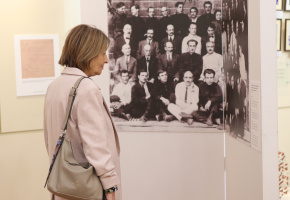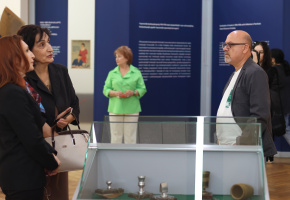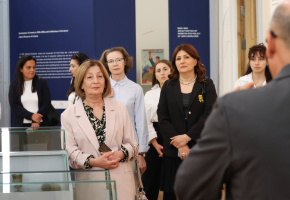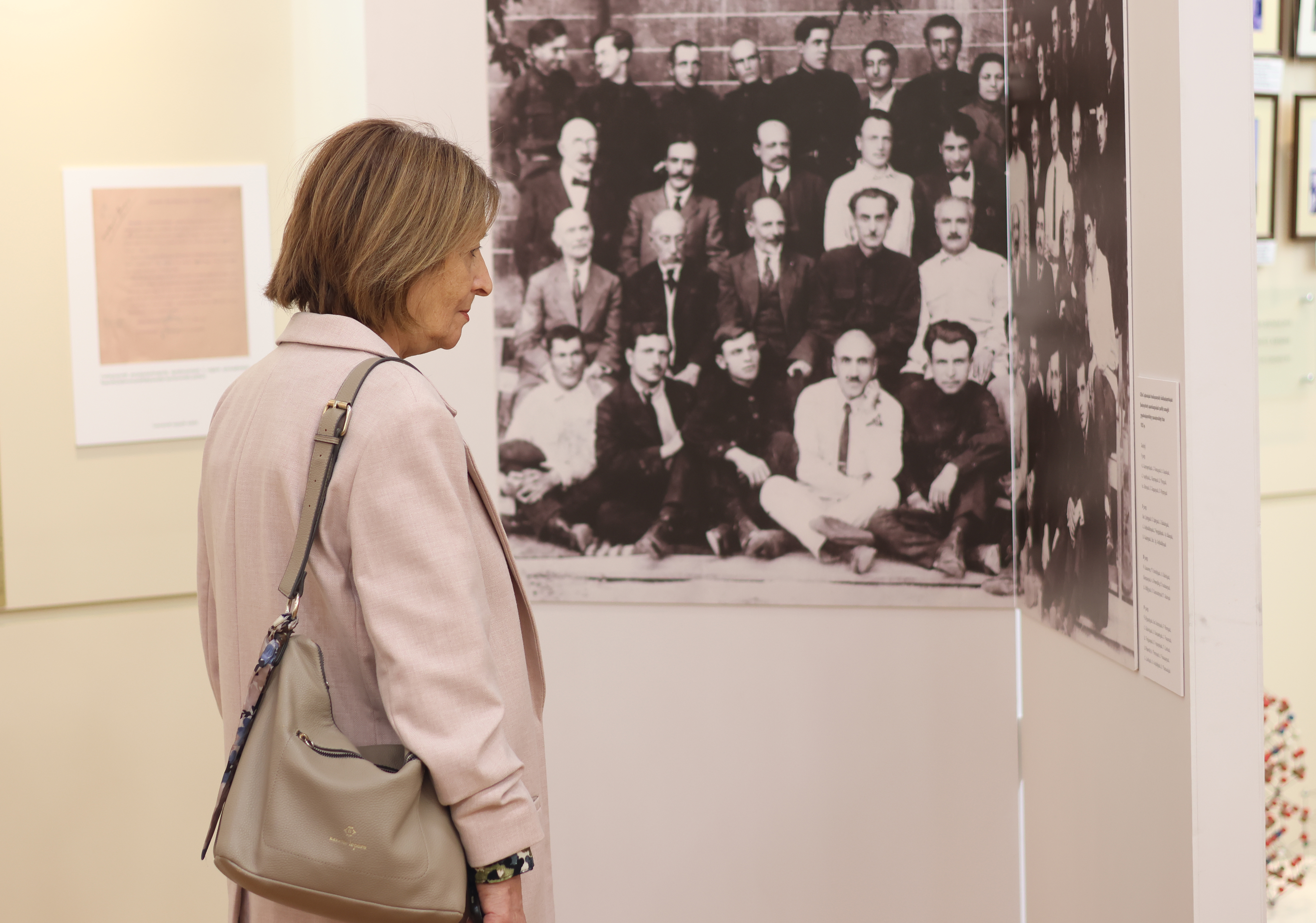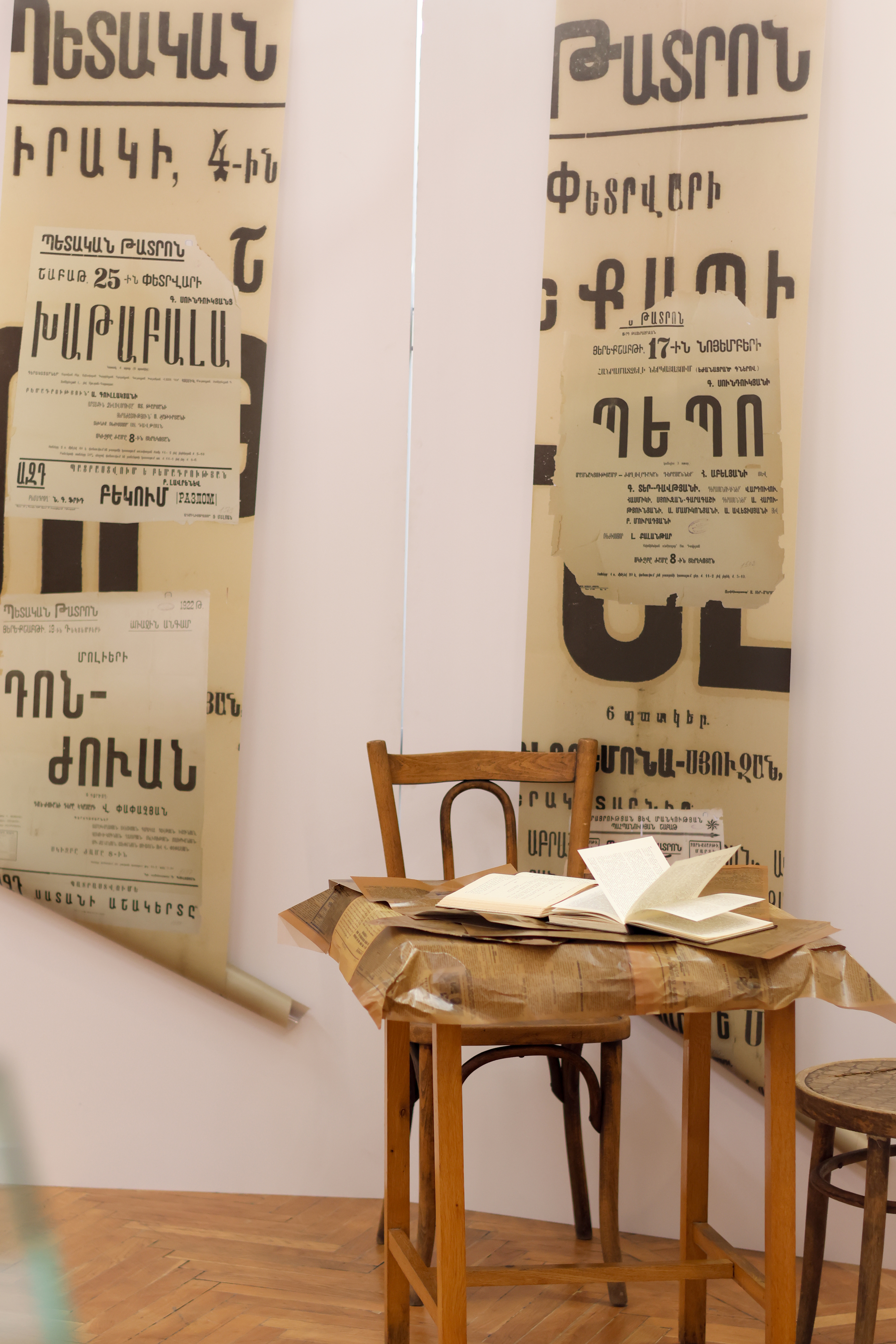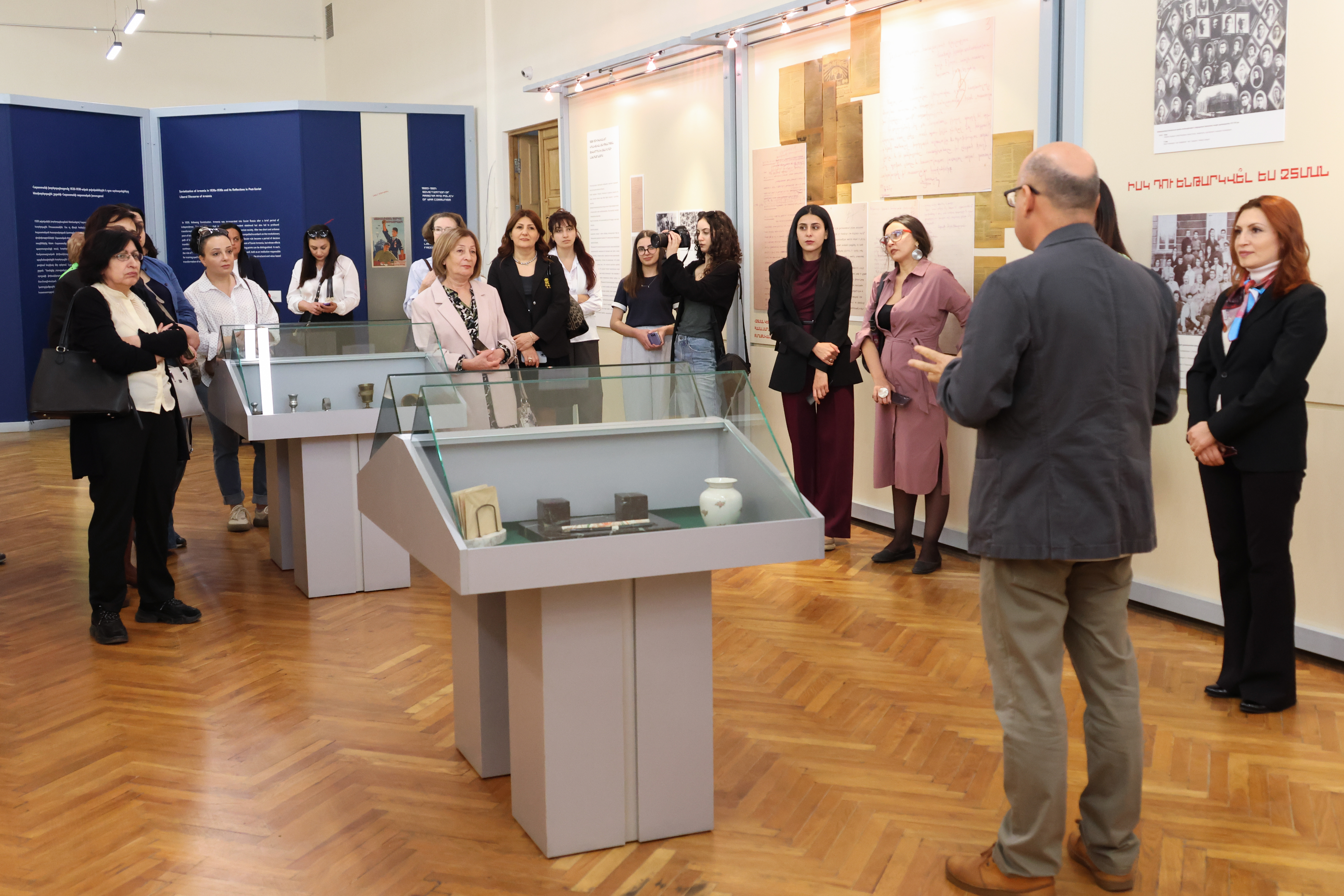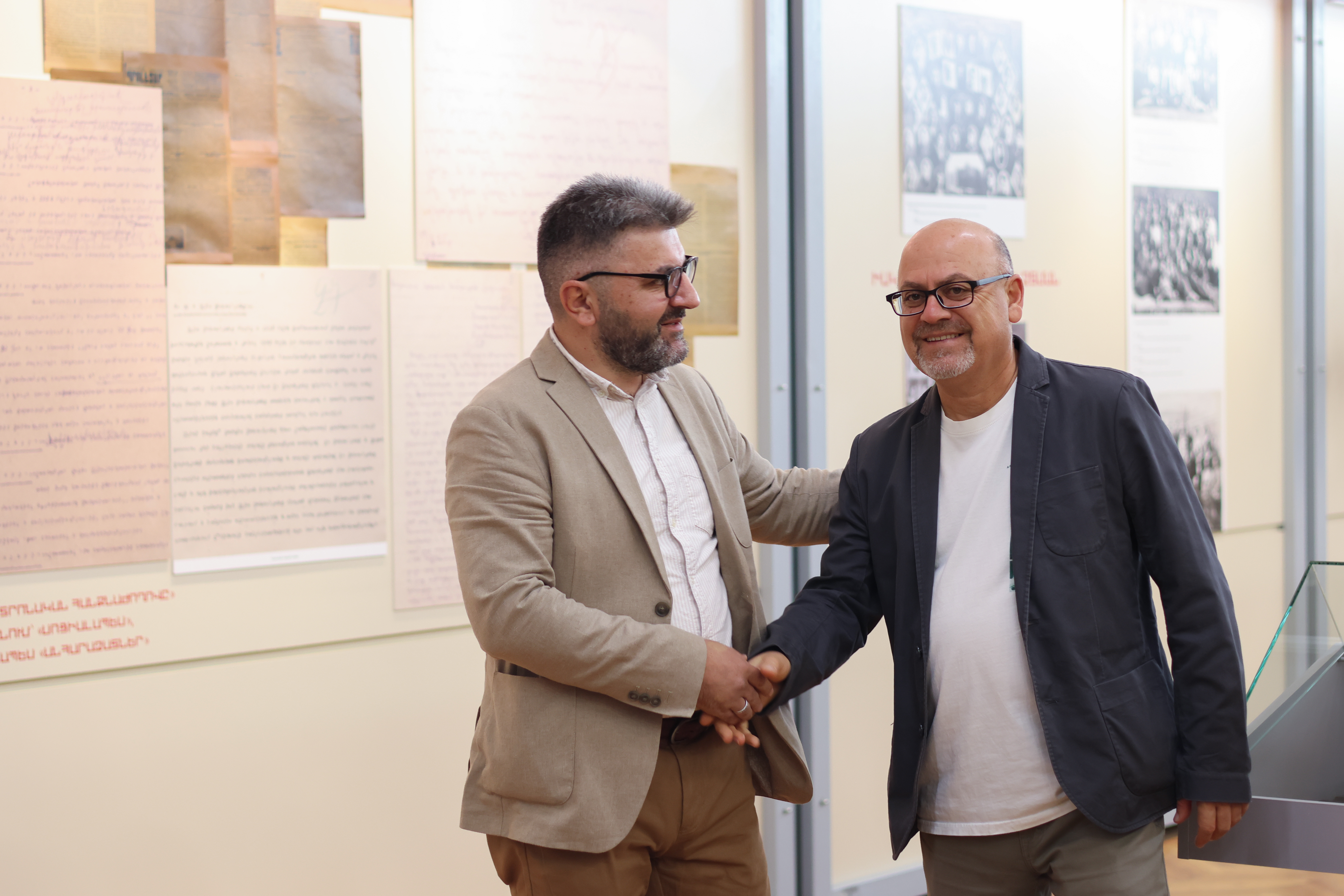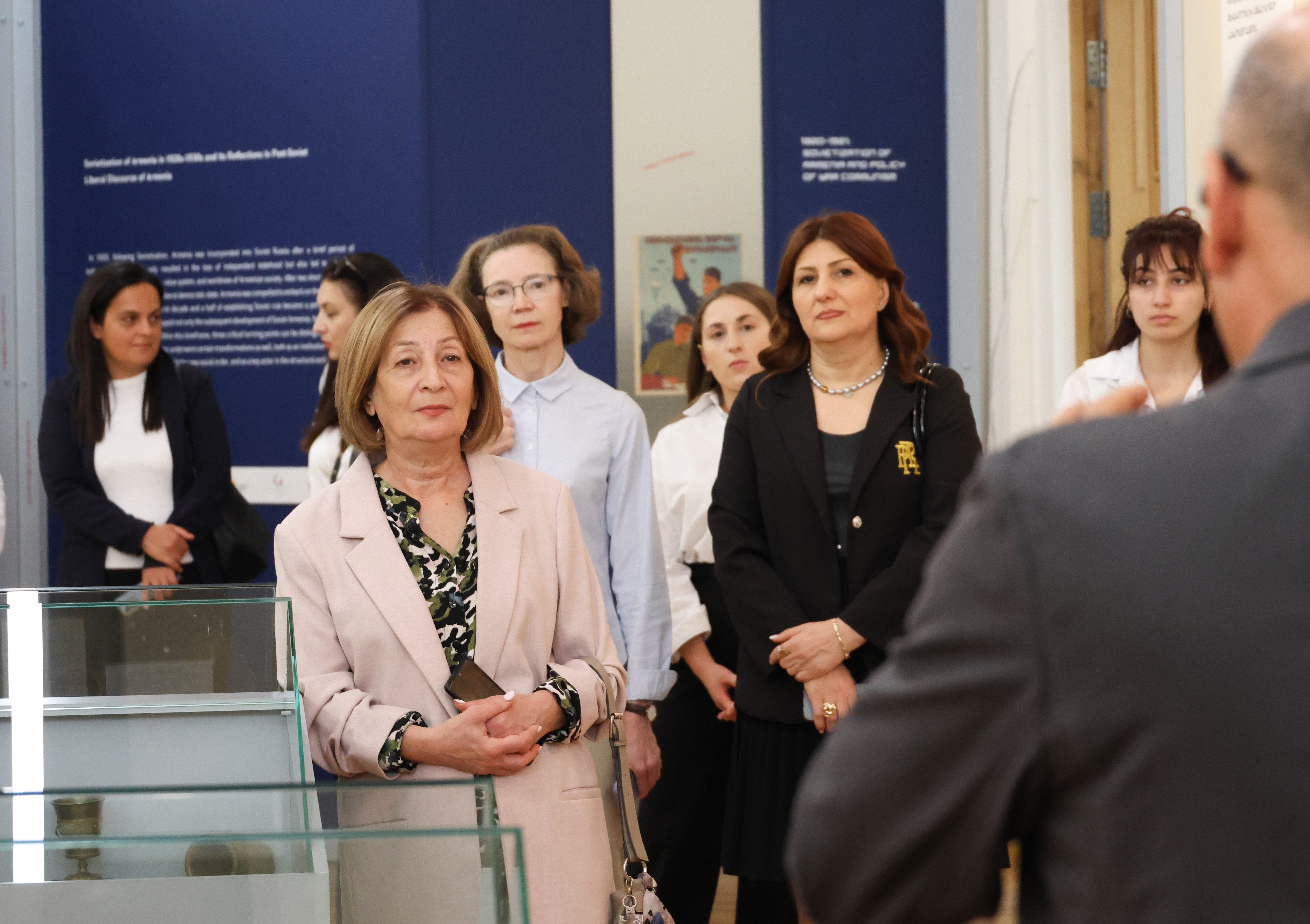September 25, 2025 | 10:44
Museum
International cooperation
Events
"Sovietization of Armenia in 1920s-1930s and Its Reflections in Post-Soviet Liberal Discourse of Armenia" exhibition opens at YSU
An exhibition titled "Sovietization of Armenia in 1920s-1930s and Its Reflections in Post-Soviet Liberal Discourse of Armenia" opened at YSU History Museum named after Professor Ludwig Gharibjanyan. The exhibits present to the public the process of Armenia’s Sovietization, along with the policies of war communism, class struggle, and the establishment of one-party rule—developments that led to the ruthless dispossession of the peasantry, the disruption of society, and the severe suppression of creative thought.
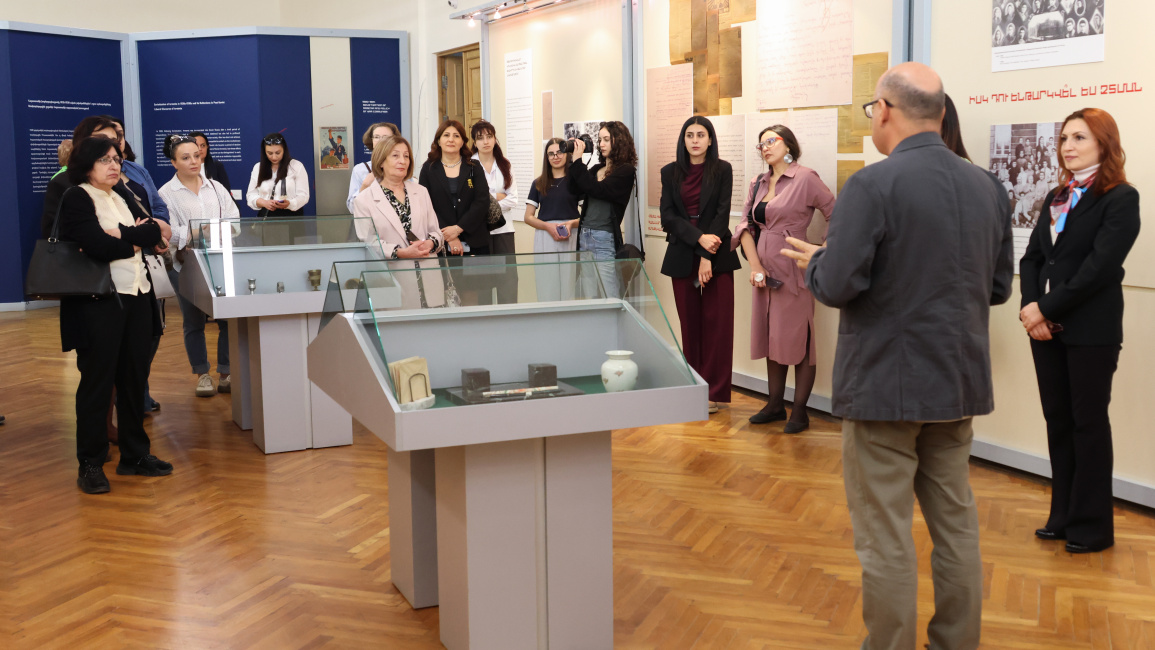
Tatevik Saroyan, Director of YSU History Museum, noted that the museum is currently celebrating its 65th anniversary. "Professor Ludwig Gharibjanyan founded this museum with the aim of conveying new messages to future generations. Today, based on the university’s vision, YSU, in collaboration with the Friedrich Naumann Foundation for Freedom, has realized this initiative with the exhibition on the liberalization of soviet Armenia in the 1920s-1930s."

Tatevik Saroyan emphasized that lectures have also been organized as part of the exhibition, and to continue this series, the museum is ready to collaborate with various institutions, including the National Library and the Museum of Literature and Art after Yeghishe Charents.
Cultural anthropologist Aghasi Tadevosyan stated that the first major component of the project, titled "Sovietization of Armenia in 1920s-1930s and Its Reflections in Post-Soviet Liberal Discourse of Armenia," was research, followed by the exhibition itself.
"Research was also conducted in the post-Soviet era; however, it was primarily carried out by scholars who worked during the Soviet period and were formed as historians during that time. Although they sought to interpret the post-Soviet period independently of Soviet perspectives and the historiographical framework that shaped them, Bolshevik pathos remains largely present in the works produced during this era," the speaker added.

Speaking about the Sovietization of Armenian society, Aghasi Tadevosyan drew attention to the policy of purges carried out at that time, aimed at completely proletarianizing society. Regarding how the new society was built through purges, he cited as an example a letter from a student in 1925, addressed to the Central Purge Commission of YSU, which is displayed in the exhibition hall.
"In 1925, the Central Purge Commission operated at YSU, identifying and expelling students who did not come from working-class or poor backgrounds. Many falsified their identities, for instance, by obtaining letters from collective farm chairmen claiming they were from poor families. However, these letters were often exposed, resulting in punishments both for the collective farm chairmen and the students," the cultural anthropologist explained.
The exhibition also features articles from the 1920s-1930s press, theatrical performances, cafes that served as gathering and discussion places for intellectuals, as well as the university as a space for building a new world and involving intellectuals from the older generation.
The exhibition will remain open until March 24, 2026.

